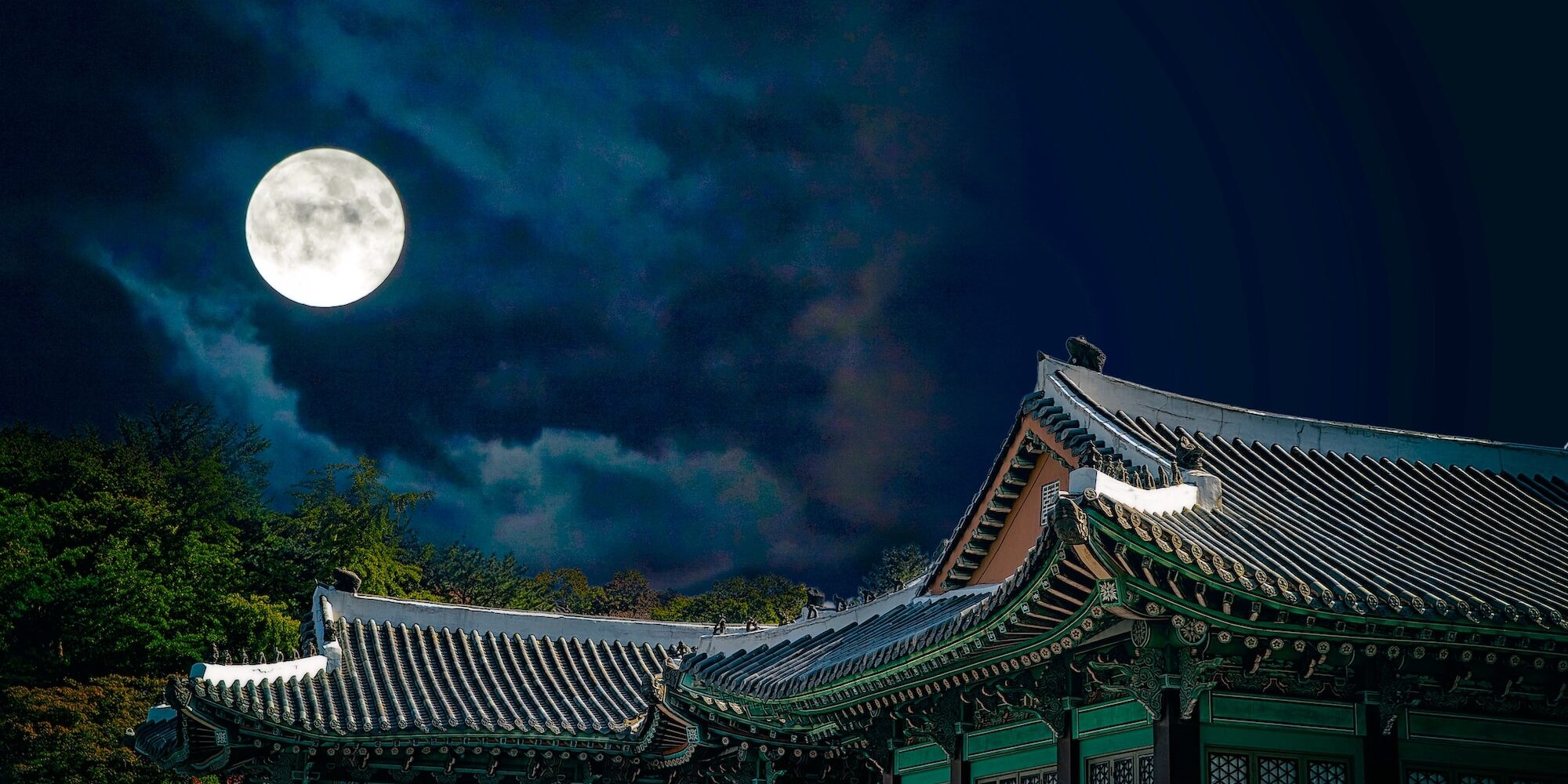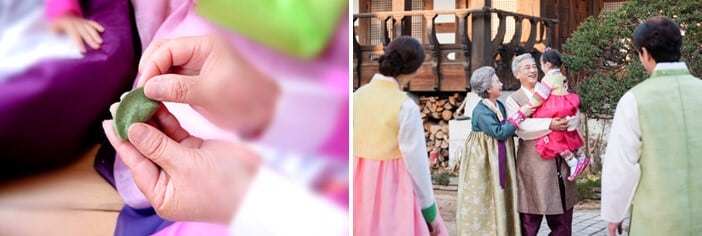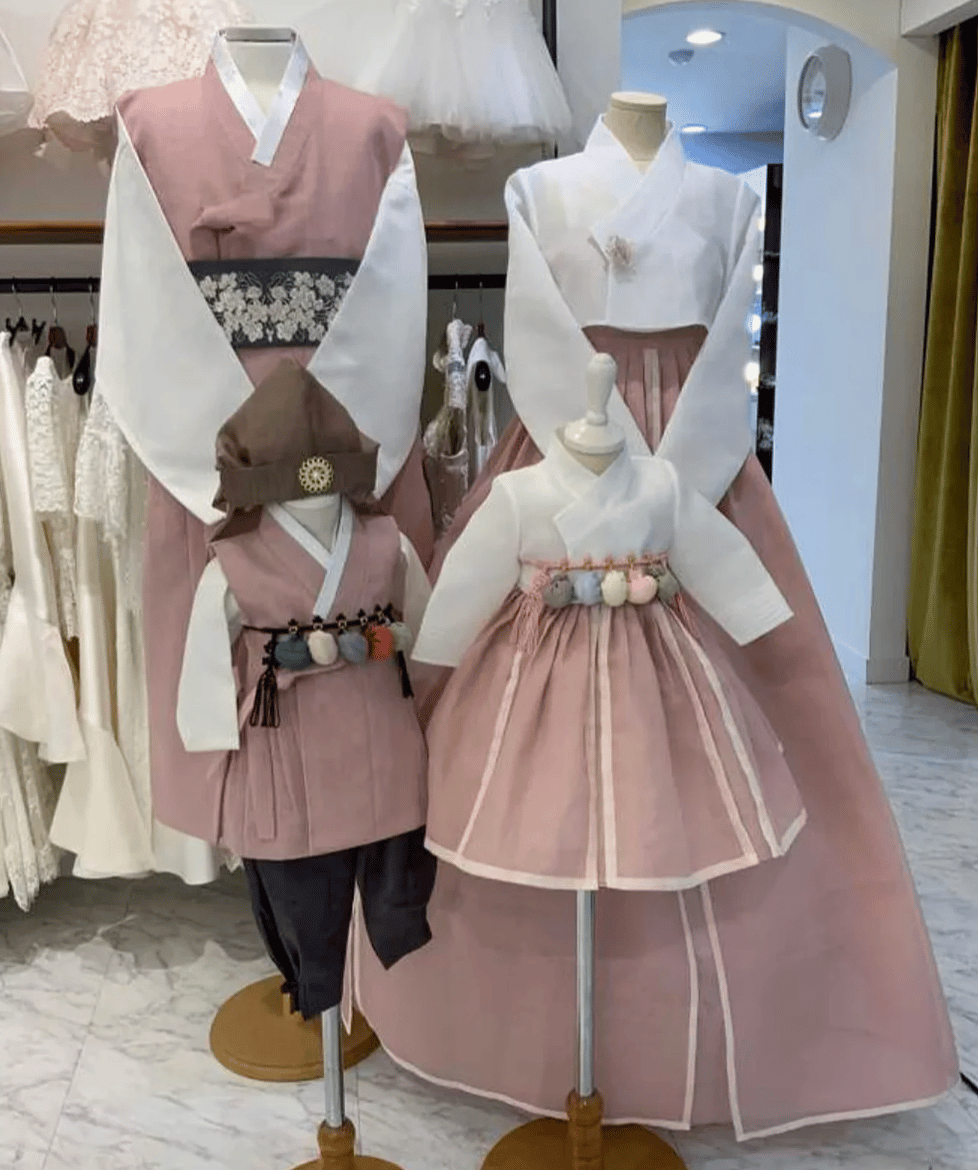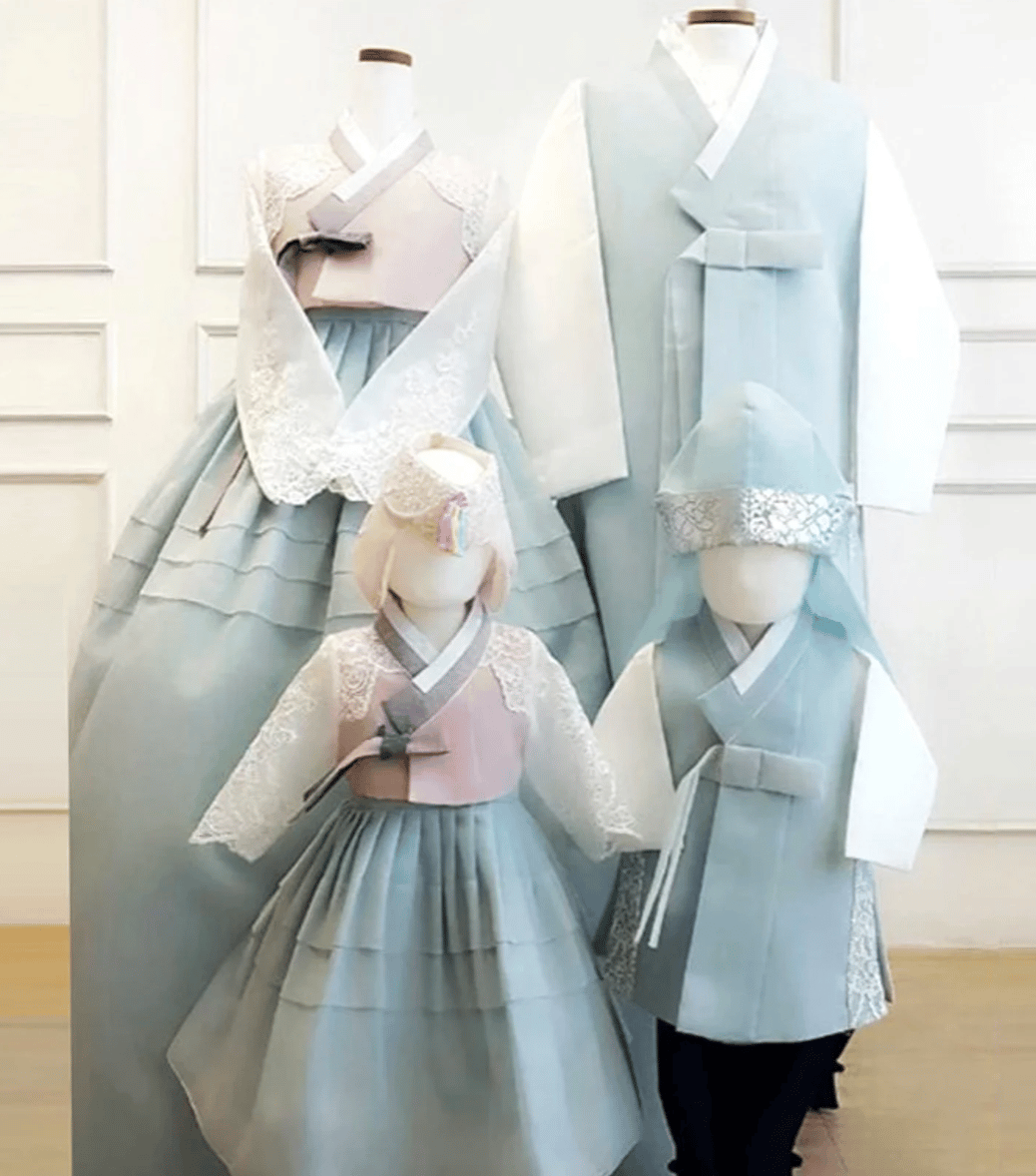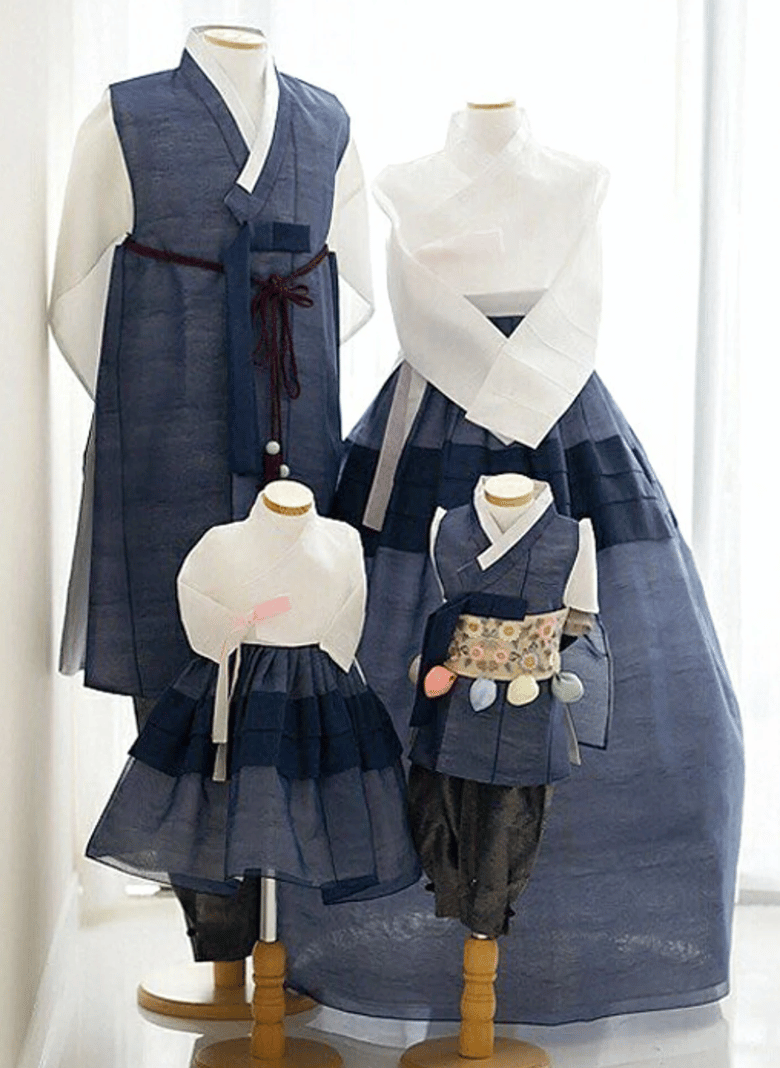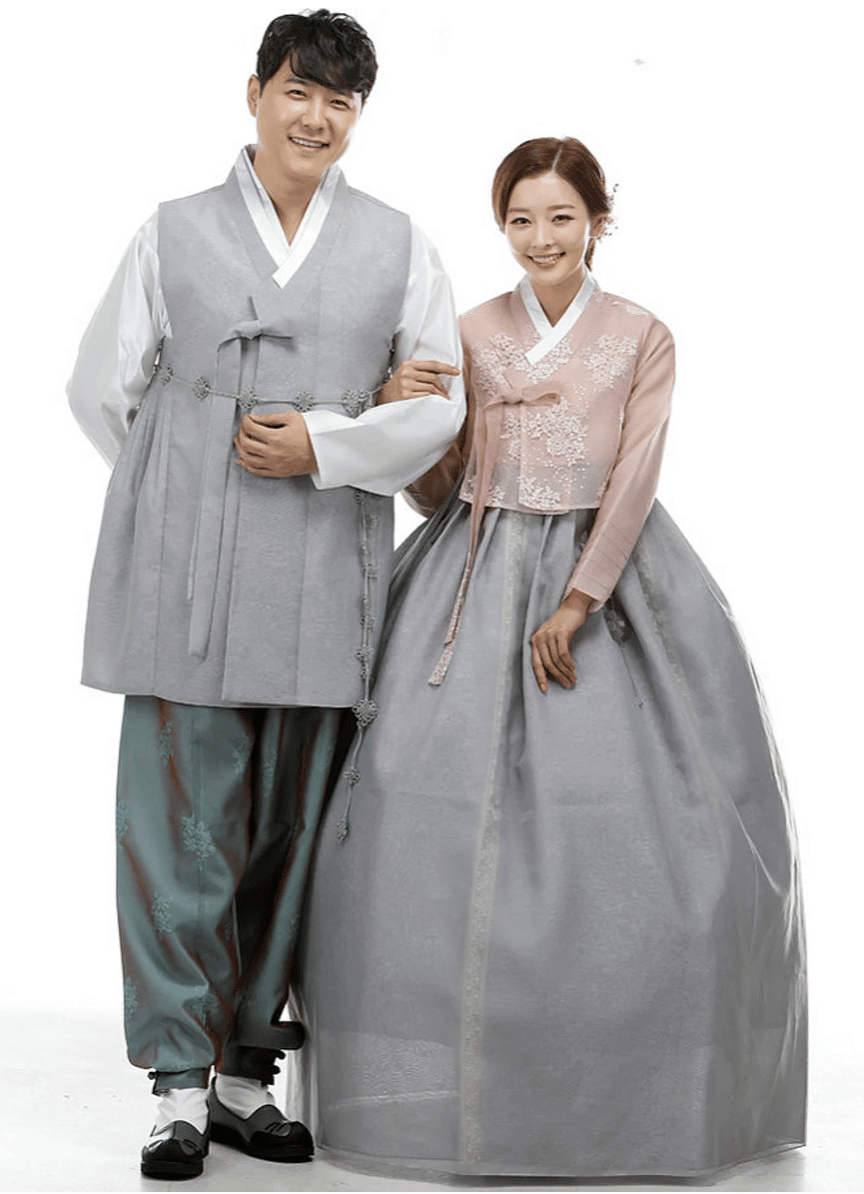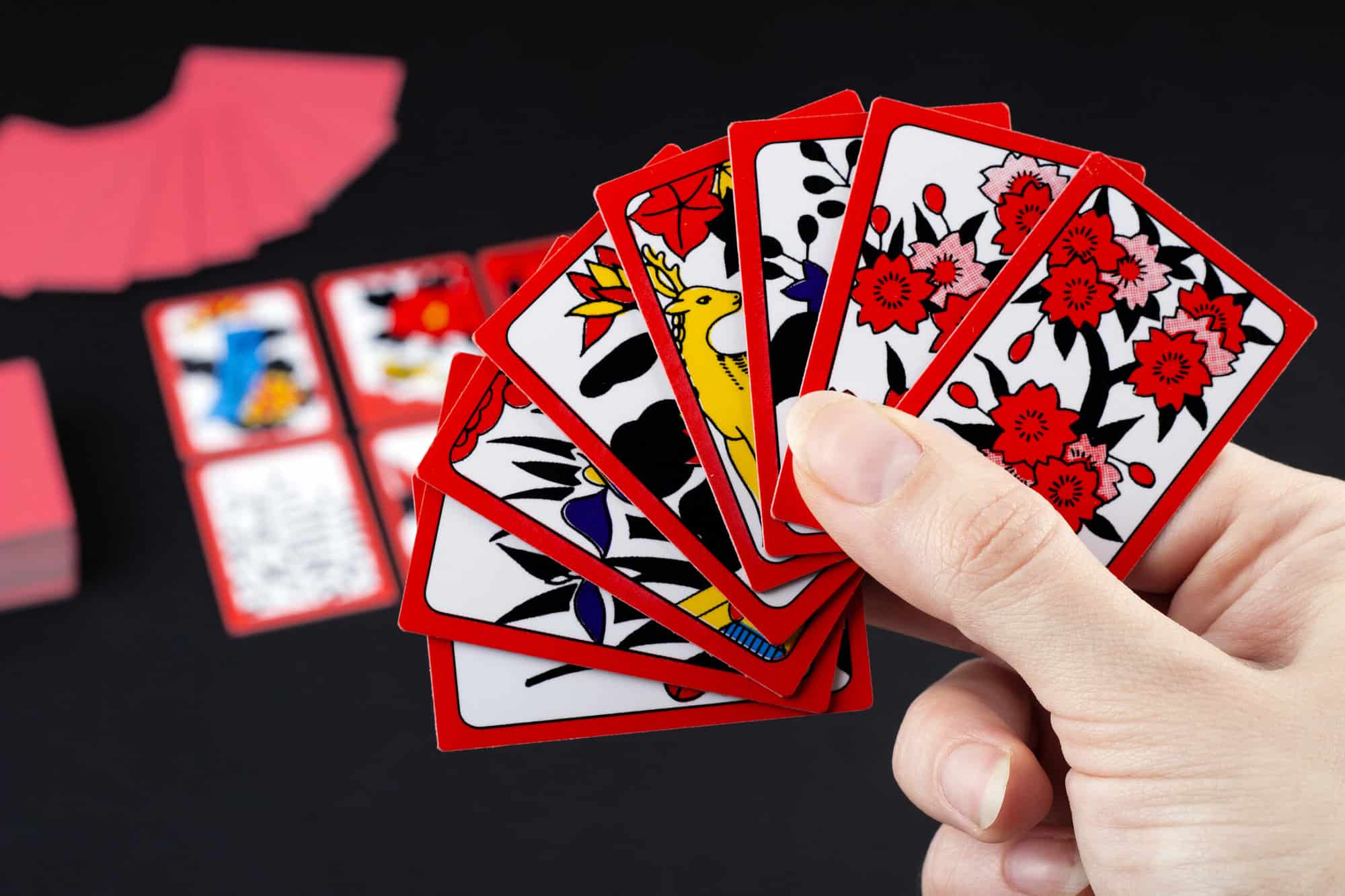Chuseok 2023 is on September 29! Be sure to check off the essentials for food, family, and fun.
What is Chuseok? Korean Chuseok (추석), also known as Hangawi, is one of the two main holidays on the peninsula, and it’s a very big deal. Considered Korean Thanksgiving, it is celebrated on the 15th day of the eighth month of the lunar calendar which generally comes during either September or October. Chuseok 2023 falls on September 29th (Friday) but the general holiday will take place over three days from September 28th to 30th.
The holiday originates from mythological Buddhist folklore about a moon rabbit and promotes the virtues of fertility, longevity, and harvest. Chuseok translates to “Autumn Eve” and it is a national holiday celebrated in both North and South Korea, as well as by Koreans around the world.
If there’s one thing you can always count on for both Chuseok and Seollal, the other major Korean holiday, it is the rising of a big round full moon. Seollal is the first full moon of the year, and Chuseok’s moon is the eighth.
Since the traditional holiday follows the lunar calendar, Chuseok dates are different from year to year. As such, Chuseok will take place on September 29th in 2023, September 17th in 2024, and October 6th in 2025.
For Koreans, Chuseok is very important because it is one of the occasions when they gather with family to honor their ancestors by visiting graves and performing a ceremony called charye. Traffic is a nightmare in Korea during Chuseok with millions of people traveling to their hometowns for rituals and festivities. If you live outside of Korea, consider yourself lucky to be able to celebrate, relatively, hassle-free.
Feasting: What do Koreans eat on Chuseok?
Korean Chuseok is a festival that celebrates the beginning of the harvest and so bountiful amounts of food and drink are prepared! It is celebrated throughout the world mainly with extensive family time, fun games, and of course, good, glorious food.
On the morning of Chuseok, family members will come together, traditionally at the home of the eldest son, a place called kun jip (literally translated as the Big House). Because of the large gathering and the great feasting that takes place, preparation for Chuseok used to be a weeks-long, labor-intensive undertaking for the kun myuneuri, or eldest daughter-in-law.
These days, however, other family members often help with the preparations, and the workload is shared. This is a holiday when Koreans look forward to feasting on all their favorite Chuseok foods such as songpyeon (half-moon rice cakes), jeon (Korean pancakes), grilled meats, and rice wine!
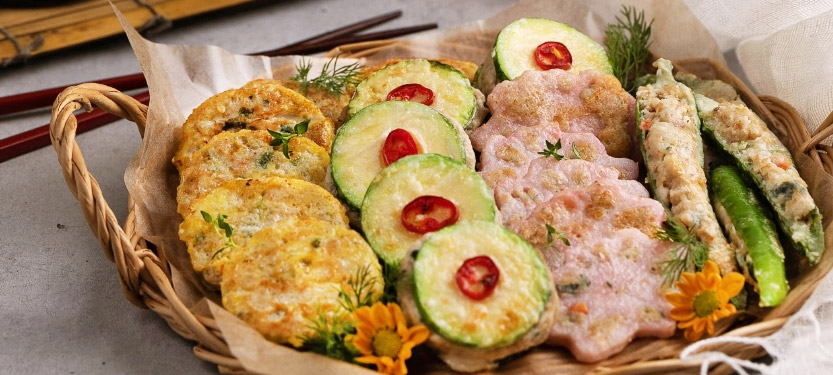
Top Foods
- Songpyeon Tteok and other colorful rice cakes signifying a bright future
- Different kinds of Jeon: vegetable, meat, fish
- Nameul (bellflower, bracken, spinach) – 3 different colors of vegetables from a root, stalk, and leaf signify prosperity
- Japchae
- Galbi Jjim with Daechu (Jujube) signifying a wish for more descendants
- Nabak Kimchi
- Whole Fish signifying spreading descendants
- Radish Soup
- Korean Pears signifying wisdom
- Large Apples signifying love and peace within the family
- Ggot Gam – Dried Persimmon
- Traditional Honey Rice Cakes in five colors signify the five elements of the universe
- Sikhye Sweet Rice Drink
- Makgeolli Rice Wine
Honoring Ancestors
Rituals to honor your ancestors are an important aspect of Chuseok. Many Koreans visit the tombs of their family members during Chuseok to pay their respects and tidy up their graves. Traditionally, families would visit tomb sites on two different days– beolcho (벌초) and seongmyo (성묘). Beolcho refers to the grass-trimming ceremony that takes place the day before Chuseok, where families will go to clean up weeds and tidy the grass surrounding the tomb. On the day of Chuseok, families will go again to bow to their ancestors and symbolically lay out a table of food and drinks, otherwise known as seongmyo.
Alternatively, families may choose to conduct an ancestral ritual at home, also known as charye (차례). On Chuseok morning, families would set up an elaborate table with traditional foods arranged in a way that would invite the spirits into the home to enjoy the feast. While individual families may have their own traditions for setting the table for charye, there are general guidelines that have been traditionally followed:
- 1st row: Utensils, cups, tteok 떡, guk 국 (soup).
- 2nd row: Guksu 국수 (noodles), yukjeon 육전 (meat pancakes), sojeon 소전 (beef pancakes), eojeok 어적 (fish), and siluddeok 시루떡 (rice cakes).
- 3rd row: Meat soup, beef soup, and fish soup.
- 4th row: Po 포 (jerky), namul 나물 (seasoned vegetables), ganjang 간장 (soy sauce), nabak kimchi 나박김치 (kimchi), and sikhye 식혜 (sweet drink).
- 5th row: Fruits and desserts (such as jujubes, chestnuts, pears, apples, and dried persimmons).
Chuseok rituals are also typically accompanied by prayer and bowing. These days, however, many modern Koreans (especially Christians) skip these traditions since they can be interpreted as ancestor worship.
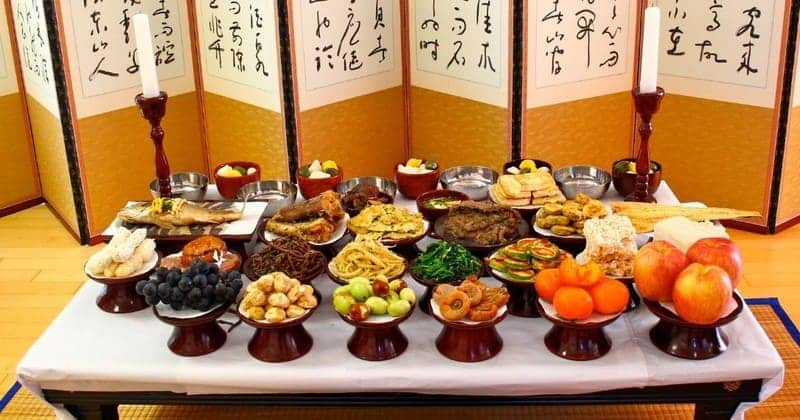
What do Koreans wear for Chuseok?
Koreans love dressing up in the traditional hanbok to get in the mood for special occasions like Chuseok and Seollal. Some people even get the family pet involved in the festive dressing with adorable Korean dog hanboks and cat hanboks.
If you are interested in renting a Hanbok for the Chuseok celebration, Etsy has you covered.
Pink Hanbok Family Set, $120+
Gifts
Gift-giving is an essential part of Korean Chuseok. You can’t fail to notice the giant Chuseok gift boxes when walking around retail stores in September. These boxes are usually filled with anything from food to toiletries and are given as a gift around this time.
.jpg/dims/resize/740/optimize)
Unlike the Christmas holidays, gifts at Chuseok are not given reciprocally. It is appropriate to give gifts during Chuseok if you are invited to someone’s house during this time, and it’s always a good idea to bring a present that can be shared throughout the house as opposed to gifts with specific individuals in mind.
This is also a time when many people send gifts to clients and business associates. Of course, if there is someone who has helped you a lot during the year, this could be a good time to show your appreciation by getting them a Chuseok gift.
This is a time when retailers will stock many gift items. If you live in Korea, it shouldn’t be hard to find a gift to give during Korean Chuseok because most shops and supermarkets will have massive, clearly labeled gift sets that are suitable for Chuseok.
As Chuseok celebrates the beginning of harvest, many of these gifts will be food-based and they will range from fruits and rice cakes to huge sets of Korean Beef or seafood, or even Spam!

Games and Activities
Go Stop (고스탑) – One of the favorite games to play when the Korean family is gathered is Go Stop! Go Stop is a fun fast-paced game played with small plastic cards called Hwatu (화투). The rules to this game are not simple and it may take at least a few rounds before you figure out how to play it but don’t be surprised if you get addicted! Many Korean Americans have fond memories of their parents and family members playing this game endlessly, and not just on holidays.
Here’s a great high-quality set of Hwatu cards that come with instructions and other extras:
Check out this video tutorial and try this hard-core Korean game for yourself this year!
Juldarigi (줄다리기) – Commonly known in Western countries as “tug-of-war”, juldarigi is another traditional folk game played during Chuseok. Large villages would historically come together to compete against each other in hopes of bringing about good luck for the year’s harvest. Korea’s version of tug-of-war typically uses an enormous hand-woven straw rope that requires tens to even hundreds of people on each side. Korea’s juldarigi tradition is actually listed under UNESCO as an intangible heritage item!
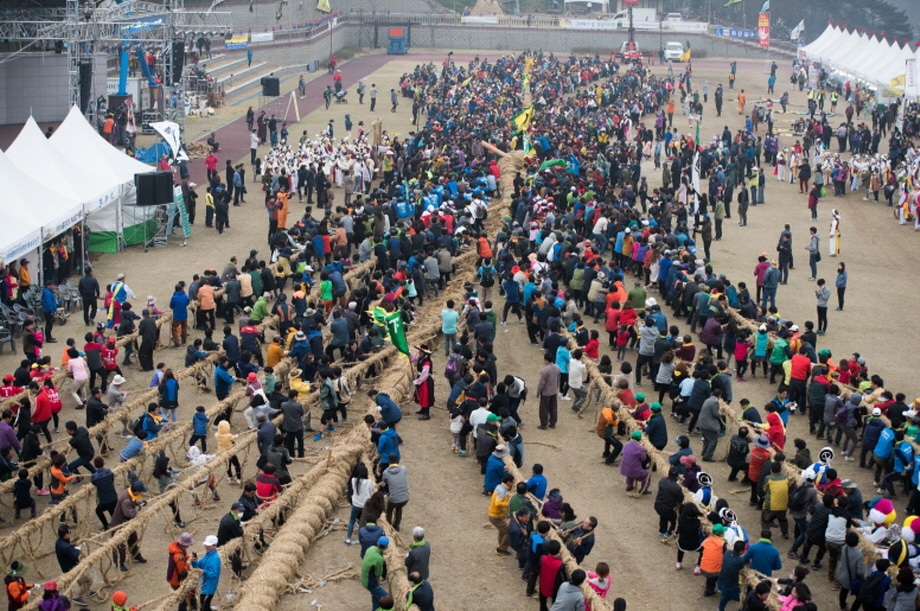
Korean villages traditionally celebrated with various entertainment such as Samoulnori (traditional percussion quartets) or Talchum (masked dances), Ganggangsullae (Korean circle dances), and Ssireum (Korean wrestling).
However you decide to celebrate this year, be sure to gaze at the full moon and make it a Happy Chuseok!

